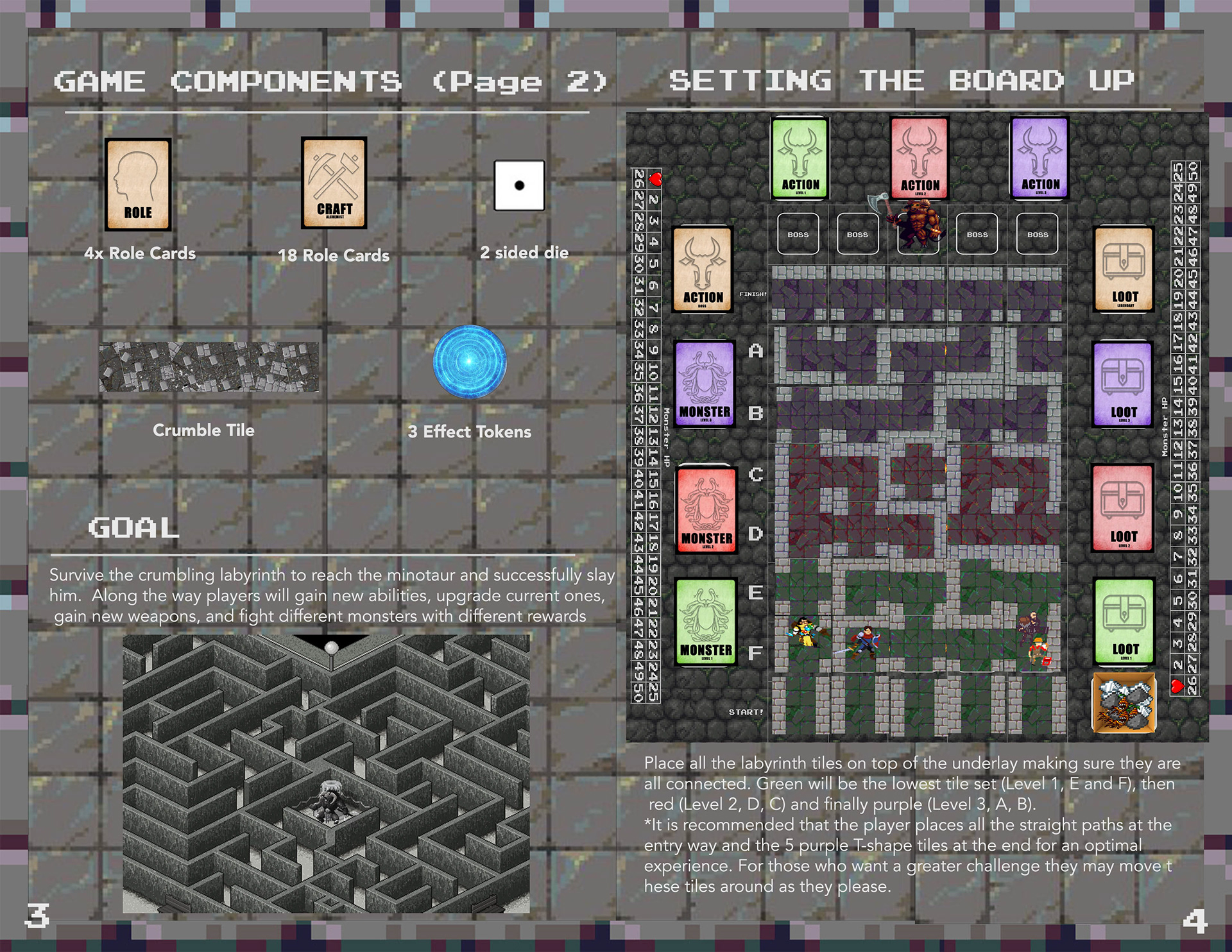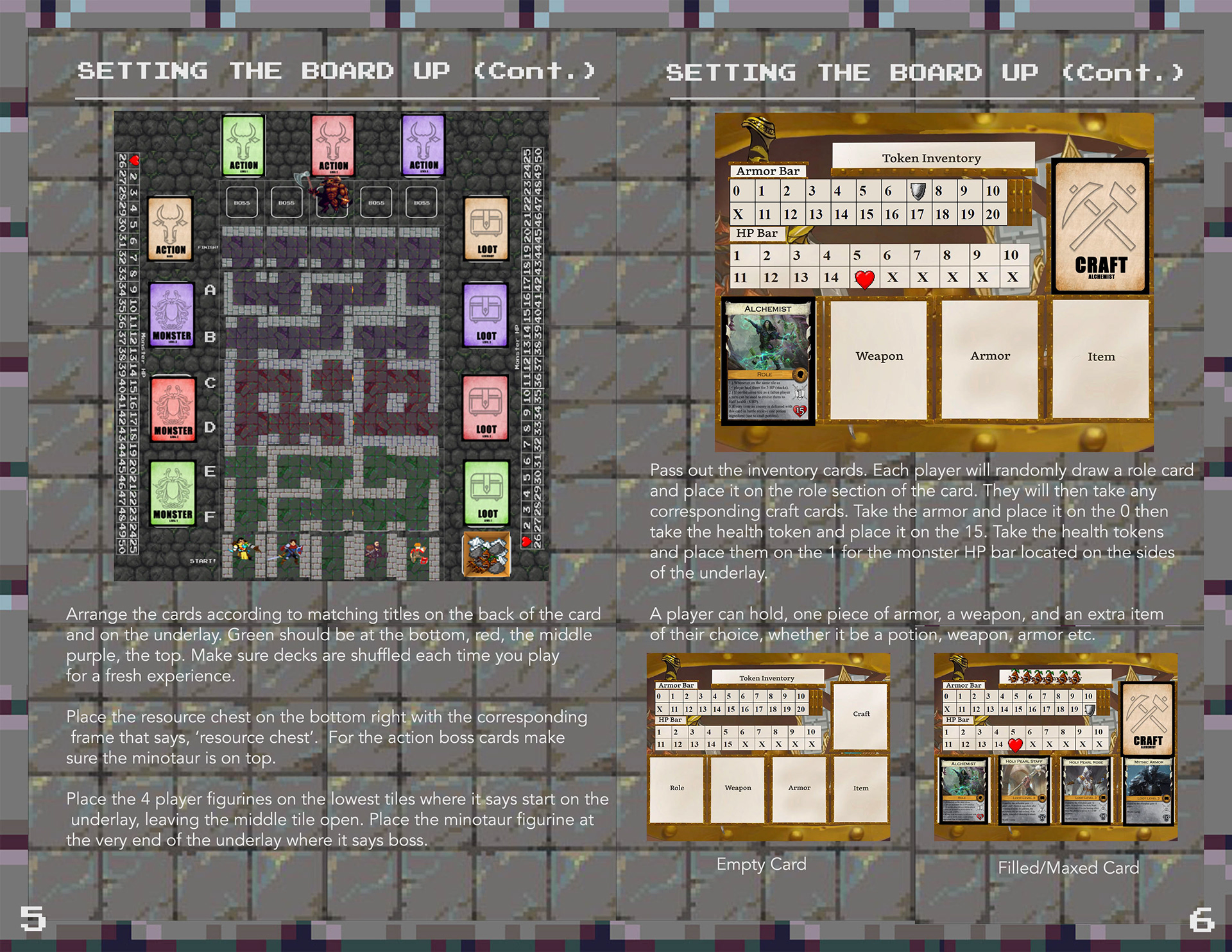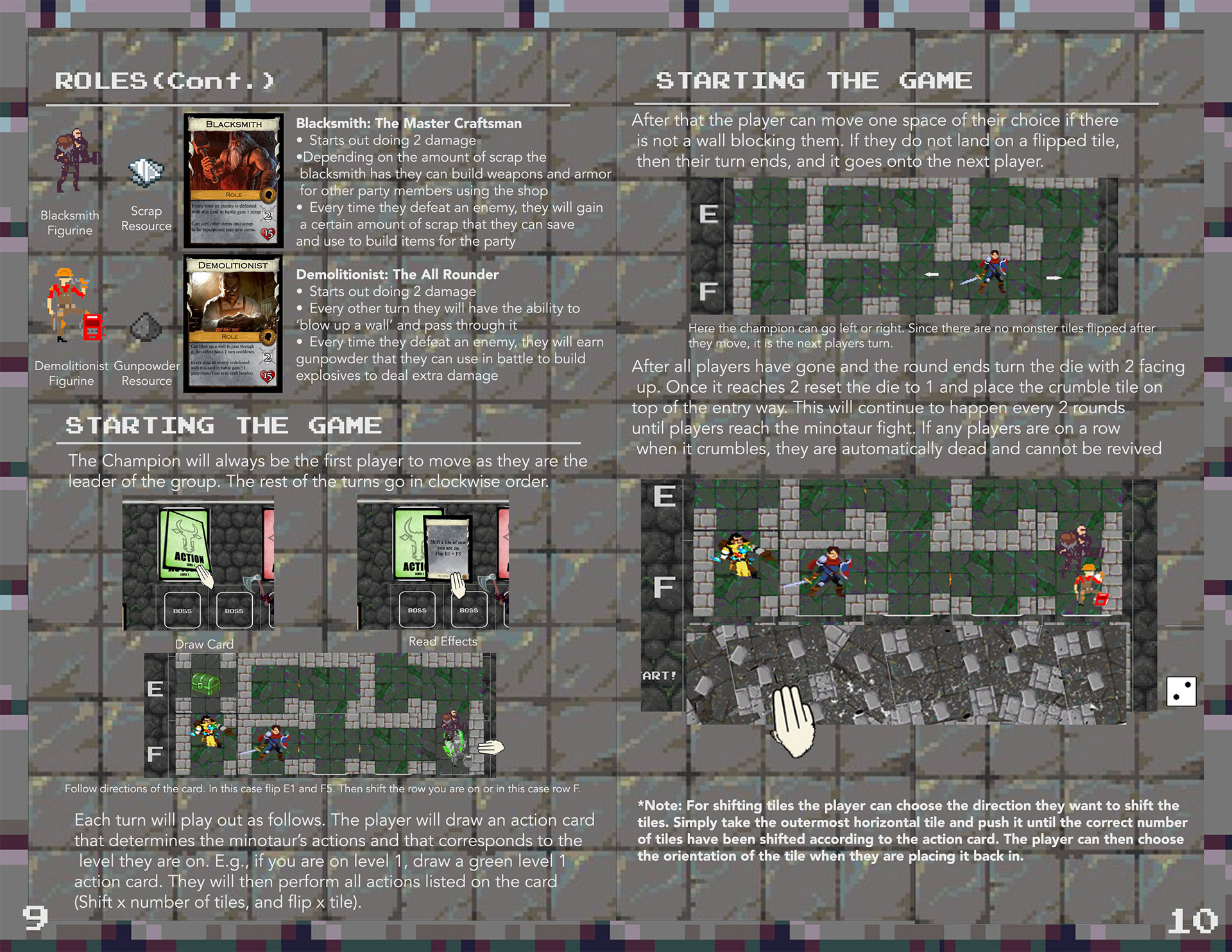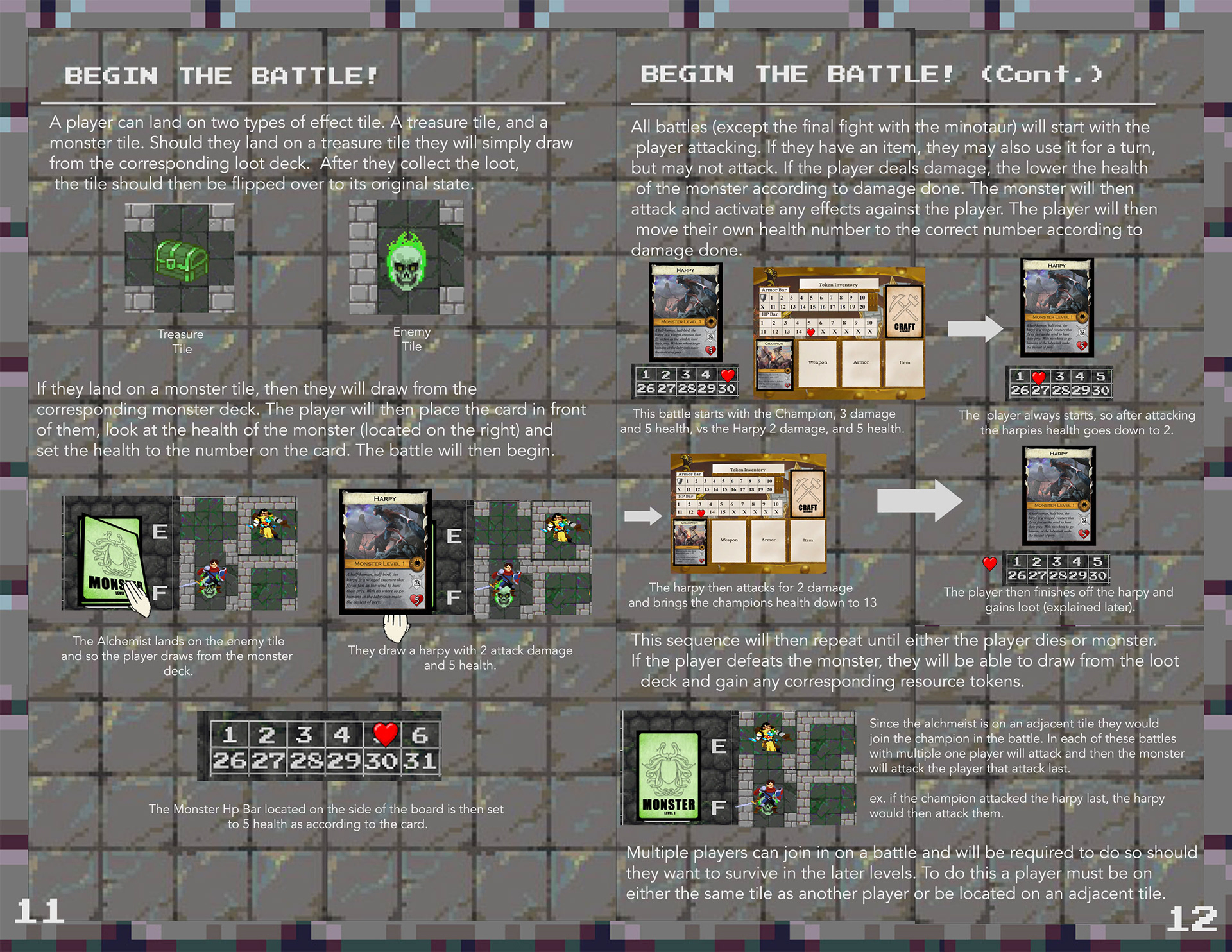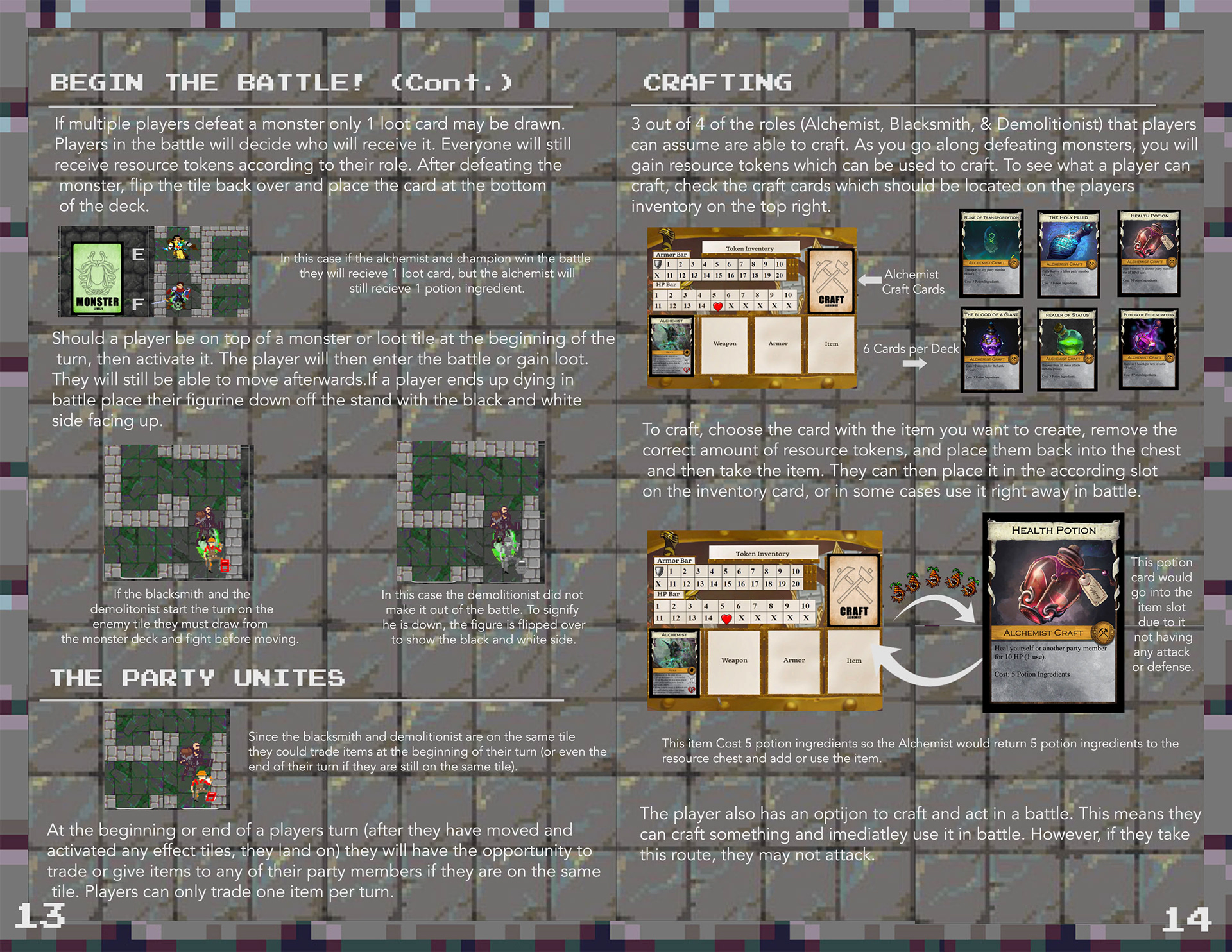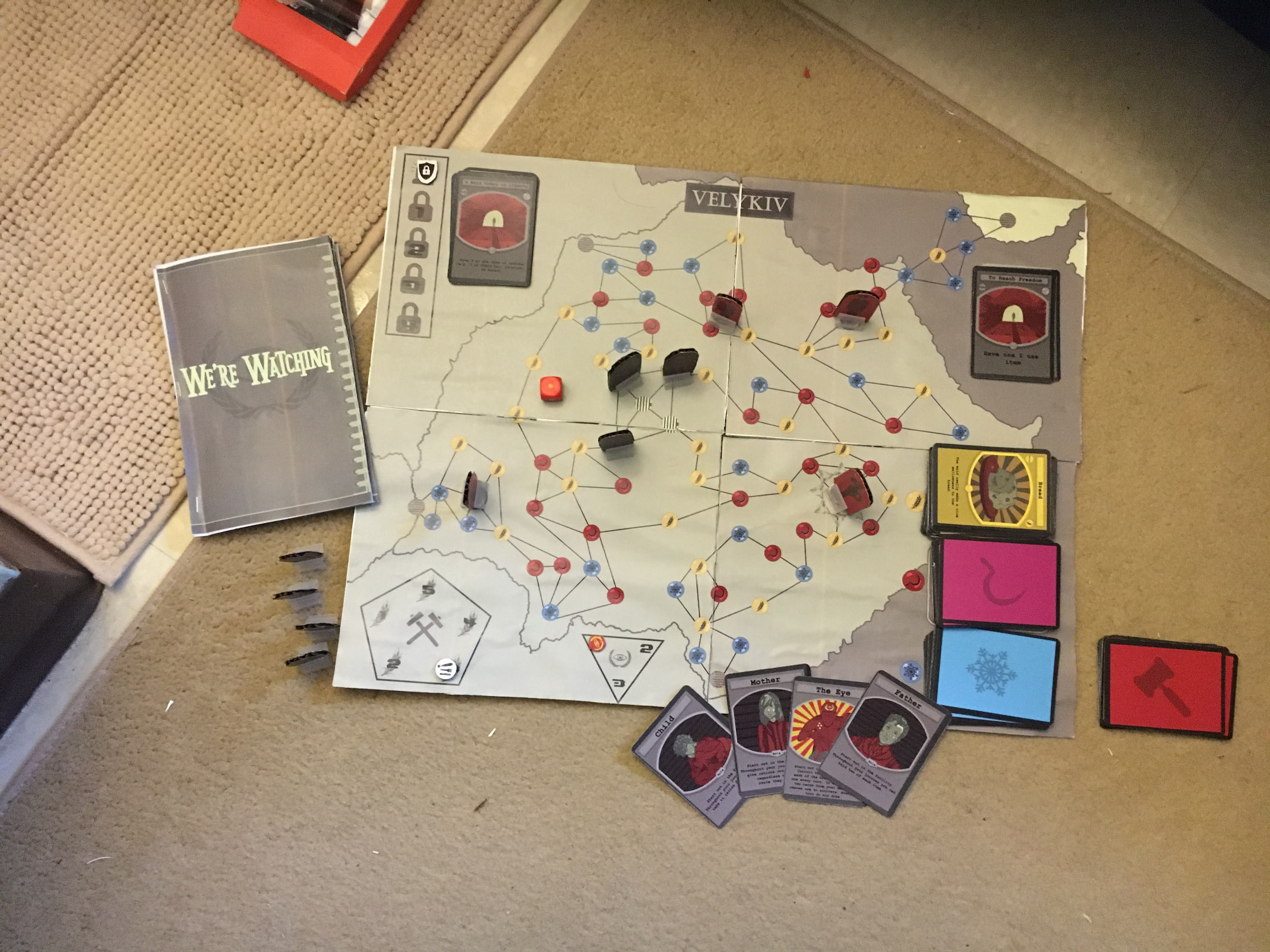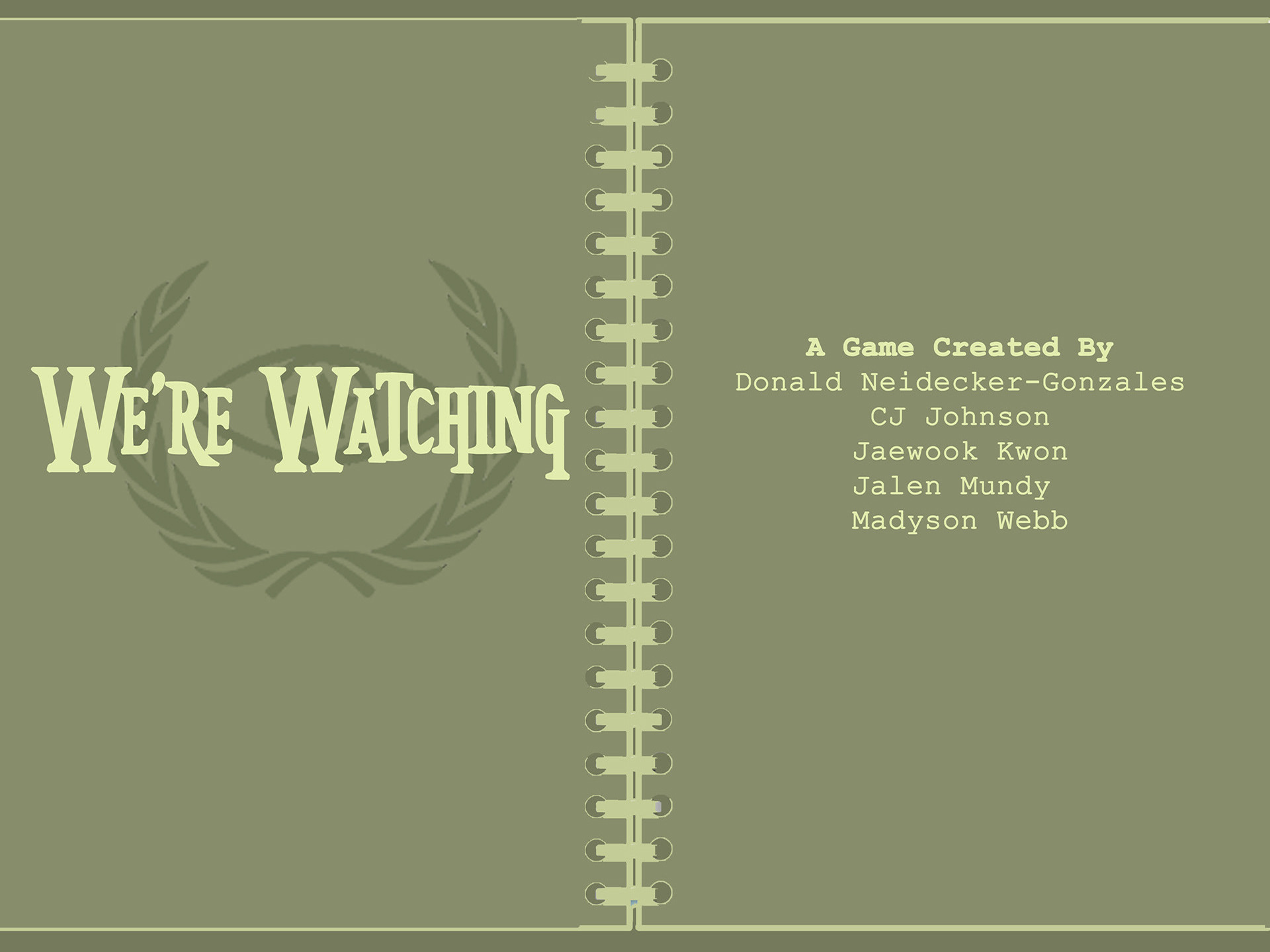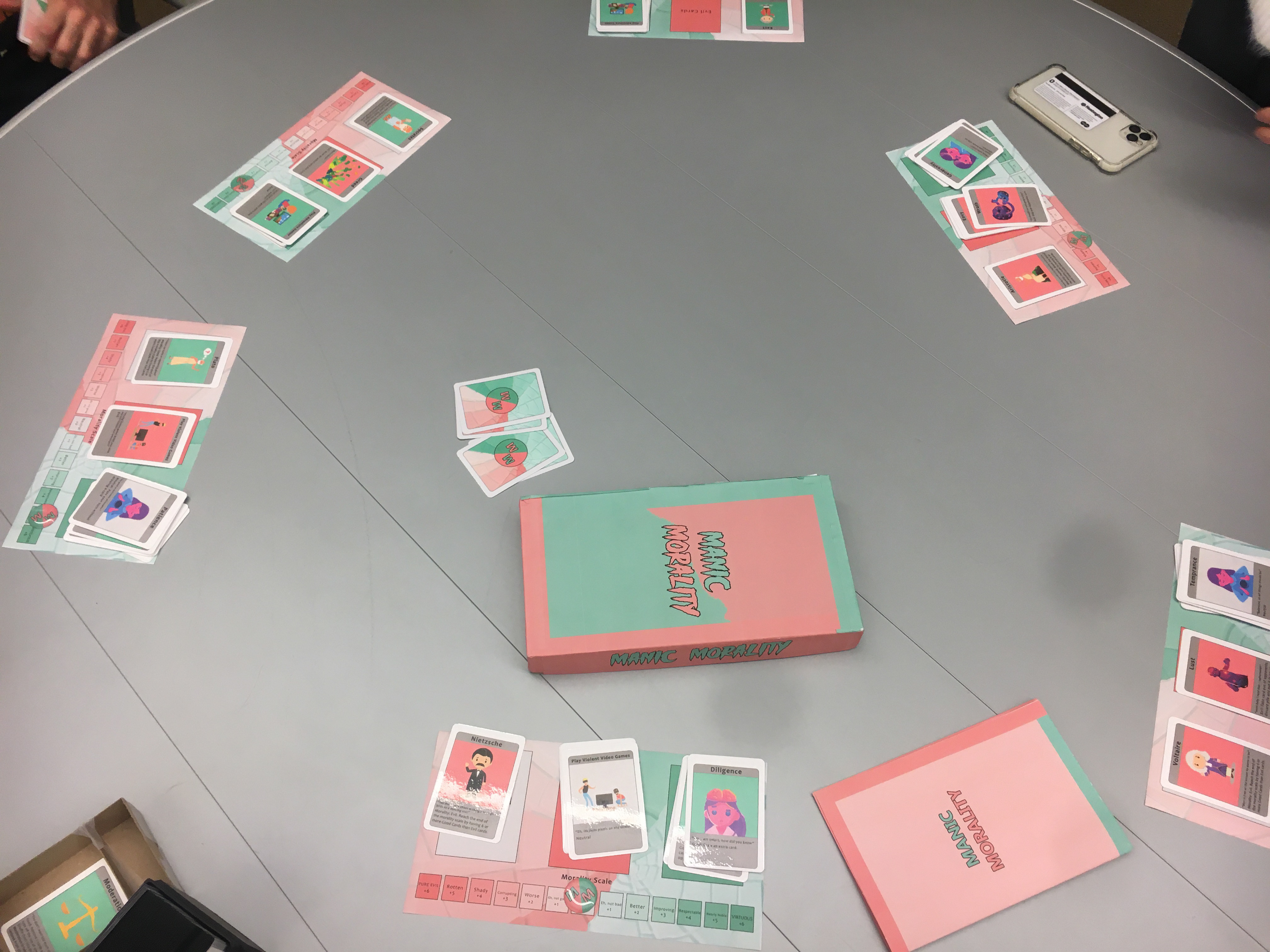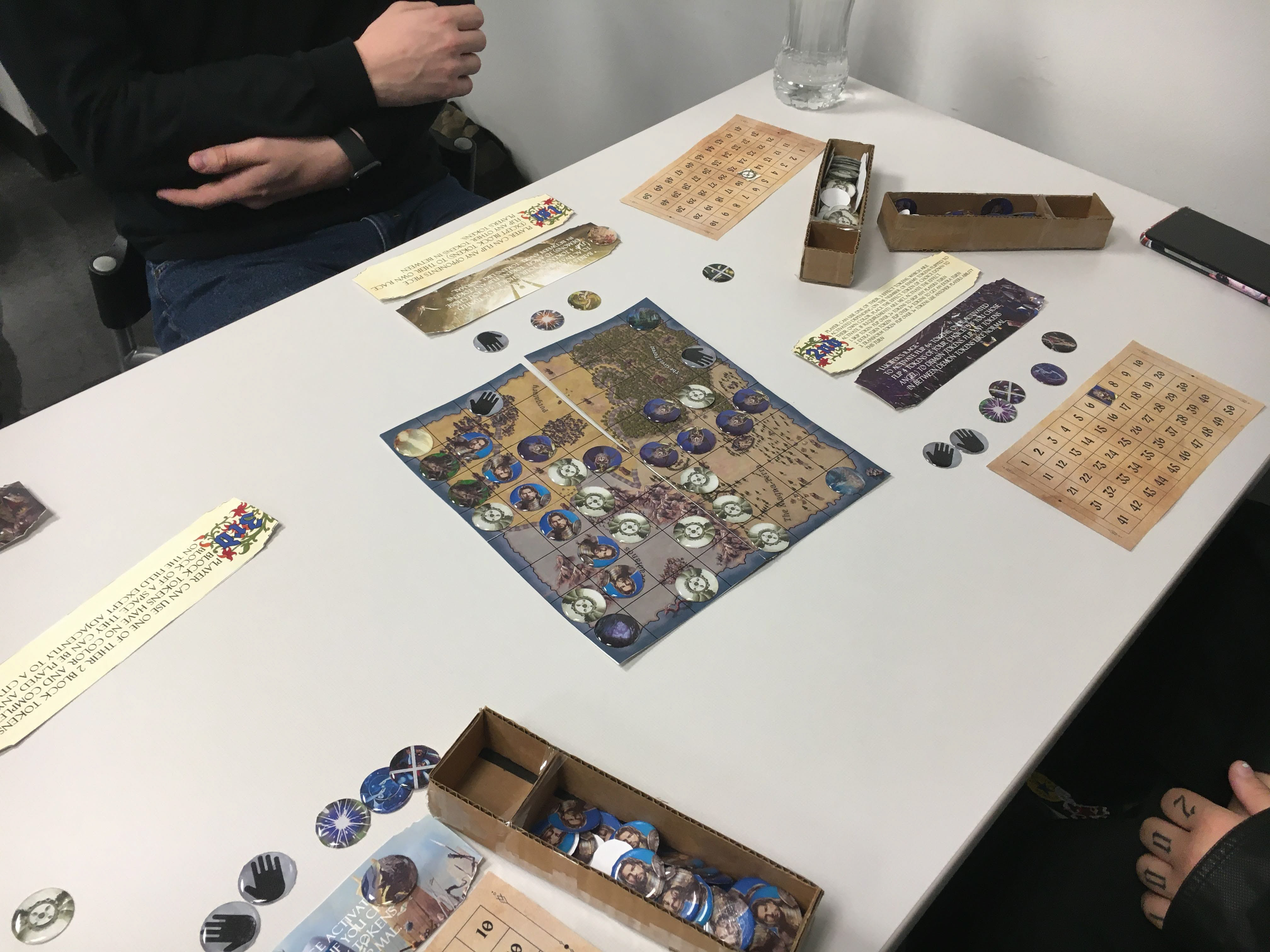School Project
Class: Design 3104: Intro to Game Design
Members Involved: Trevor Feldstein, Donald Neidecker Gonzales (Myself), Payton Reed, Madyson Webb
My Role: Game Designer, Component Designer, Narrative Designer
For this Project, we had two weeks to design a board game with moving tiles. Inspired by the myth of the minotaur, our group decided to create a dungeon crawling game through the minotaur's labyrinth where players work together in a party to reach the end and beat the minotaur. Each row shifted left or right once per players turn in addition to one of the tiles being flipped over to reveal loot or an enemy. As players move their way forward, they must stick together with their party as enemies get stronger and stronger making teamwork crucial.
Since we only had two weeks to make the game, I created a quick drawn prototype of what a board would look like in addition to basic cards. The biggest problem in this first version was that players would continue to fight monsters until they were way over leveled for the next section. This not only made the game boring because the players could easily wipe out anything in their path but also really slowed down the pacing of the game.




For the first rendition of cards, I used a card template from the game 'Dominion' and placeholder art. While this resulted in cards that looked nice, the template did not really make sense for our game and it felt disorganized.
As there are so many different types of cards and elements to keep track of in this game, I designed a sheet that could keep track of all the unique things in an organized manner.
I created the final components and additions to the game after a few more playtests. For the final board, I added an area where players could keep track of the monster HP as well as including a neater form of the previous prototype to make the setup easier.
As previously mentioned, one of the biggest problems with earlier renditions was that the gameplay was very slow as players farmed weaker enemies. To stop this from happening, I made the crumble tile. With this, every two rounds a row of the labyrinth would be wiped out, and any players stuck there immediately lost. This forced progression throughout the labyrinth and balanced out the fights between the monsters and the players.
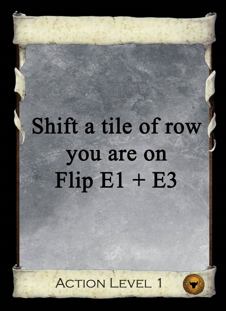



Rather than design an entirely new template for the cards, I instead remixed the Dominion card template to better fit our game by adding different elements. For loot cards, I added an attack stat and defense stat and for the monster and role cards, I included the attack and health stats on separate images so players could reference the most important info very quickly. I also moved the tag of what the card was (loot, monster, etc) to a more central area and added the specific symbol which related to the card backs.




In order to make the set up process and putting the game away a lot easier, I created different card backs that corresponded with the level of the labyrinth through the color. In addition to the color, they also contained the name and image of what card they referred to.
This is the final inventory sheet. It uses the same design as the previous one but is more stylized to fit the theme of the game. Art done by Madyson Webb.
Below is a manual which I designed to resemble the labyrinth. It provides lore as to how your party ended up in the labyrinth, in addition to a detailed tutorial on how all the mechanics work.

